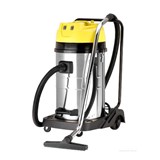Even during the recession, there seems to have been increasing emphasis on premium adult products, including organic lines.
The Innova Database recorded over 2,300 launches globally in 2009, up 8% over the 2008 total, when numbers breached the 2,000-mark for the first time. The US and Europe accounted for two-thirds of the total number of launches, trailing well behind their actual share of the US$20billion-plus global market, which stands at about 90% by value. This probably reflects ongoing efforts to develop sales in non-traditional markets in other parts of the world, particularly Asia. Australia and New Zealand, on the other hand, accounted for nearly 6% of launches, slightly ahead of their 5% share of the global market.
In more developed breakfast cereals markets, particularly the US, the UK and Australia, where they tend to be the predominant breakfast choice, the market is extremely competitive, with high levels of product activity and promotional expenditure.
Looking at launch activity recorded by the Innova Database, it is clear that similar themes are at work to the rest of the food and drinks market, with a focus on health, convenience and indulgence.
Breakfast cereals are by their very nature convenient, particularly in the cold ready-to-eat sub-sector. Even so, initiatives are trying to increase this level of convenience still further, as exemplified by Kozy Shack's UK and US launch of its Ready Grains RTE cereals in pots with the milk pre-blended into each serving and marketed as suitable for consumption hot or cold. On-the-go packs with cereals, milk and a spoon packaged and sold together have been on the market for some years, while cold cereals are also increasingly being offered in snack-style packs for on-the-go eating.
Health remains a key product benefit marketed by the leading brands, with this now tending to be split into creating healthier versions of existing brands on the one hand and developing premium-style healthy ranges for the adult sector on the other.
Most cereals have a fairly healthy image, however, and this is emphasised by manufacturers, with the majority of launches recorded by the Innova Database having a health positioning of some kind, either passive (low-sugar, organic, etc.) or active (functional, heart health, gut health, etc.). Over three-quarters of global breakfast cereal launches recorded over the past year had a health positioning of some kind, rising to over 85% in the US and nearly 90% in Australia.
The Australian market has been particularly notable for the introduction of innovative functional cereals, with launches recorded by Innova in the second half of 2009 alone including Nestlé's Uncle Toby's Plus Omega 3 Lift and Healthwise for Bone Wellbeing, Kellogg's Just Right Antioxidant and Goodness Superfoods Digestion 1st and Protein 1st cereals with the innovative BarleyMax 'super' wholegrain. The use of wholegrains was an area of particular interest in most of the developed markets, as was the reduction of sugar and fat levels, both in existing brands and new 'healthier' options.
The high level of fruit usage in cereals has also helped to give a healthy image, but has the added benefit of creating a more indulgent image across a whole range of cereals, particularly for products using exotic and so-called 'superfruits'.
According to the Innova Database, fruit or fruit flavours were used in 45% of launches in 2009, with berries featuring particularly strongly. However, chocolate also remained a popular ingredient, featuring in nearly one-fifth of total launches across a variety of products including children’s cereals and premium adult lines.
The children's cereals market is also very competitive, and initiatives to limit advertising in some countries have caused problems with some brands, as has the economic downturn that has encouraged parents to buy cheaper retailer own brands.
As a result, some companies have been focusing on developing their brands as well as launching innovative new products, such as Honey Monster Foods, the Sugar Puffs parent, which introduced Monster Rocks and its limited edition Banana Puffs in the UK in 2009. Another 2009 launch was a new porridge for children by market leader Quaker under the Paw Ridge branding. Meanwhile, in Germany, Nestle introduced the top 10 UK brand Shreddies in classic and Choco variants.
While organic products have generally faced considerable challenges in the US and Europe over the past few years, with falling demand in many parts of the market, new product activity in organic cereals appears to have been unaffected by this, with the number of organic launches in the sector more than doubling between 2007 and 2009 to take account for nearly 18% of the total.
According to Lu Ann Williams, Head of Research for Innova Market Insights, "the breakfast cereals market has continued to perform fairly well despite its relative maturity, the high rate of missed breakfasts in many countries and the development of more convenient breakfast alternatives.
"Much of this," she feels "can be attributed to ongoing high levels of new product development and promotional expenditure, as well as a continuing focus on health, backed up by emphasis on taste, quality and convenience."















